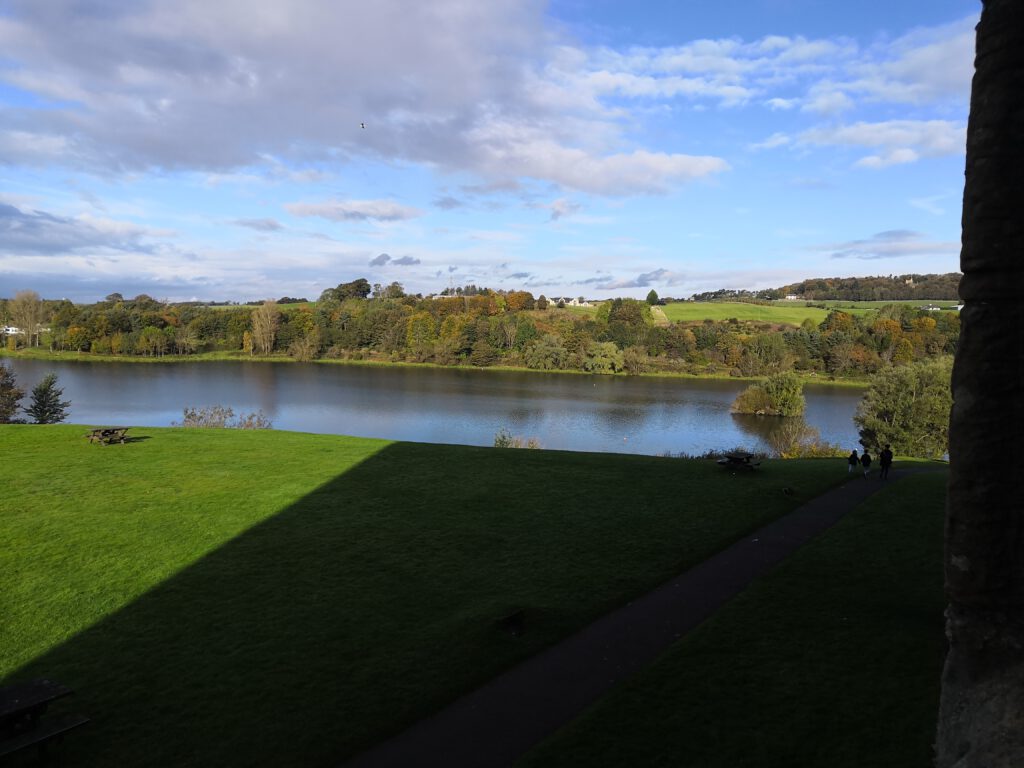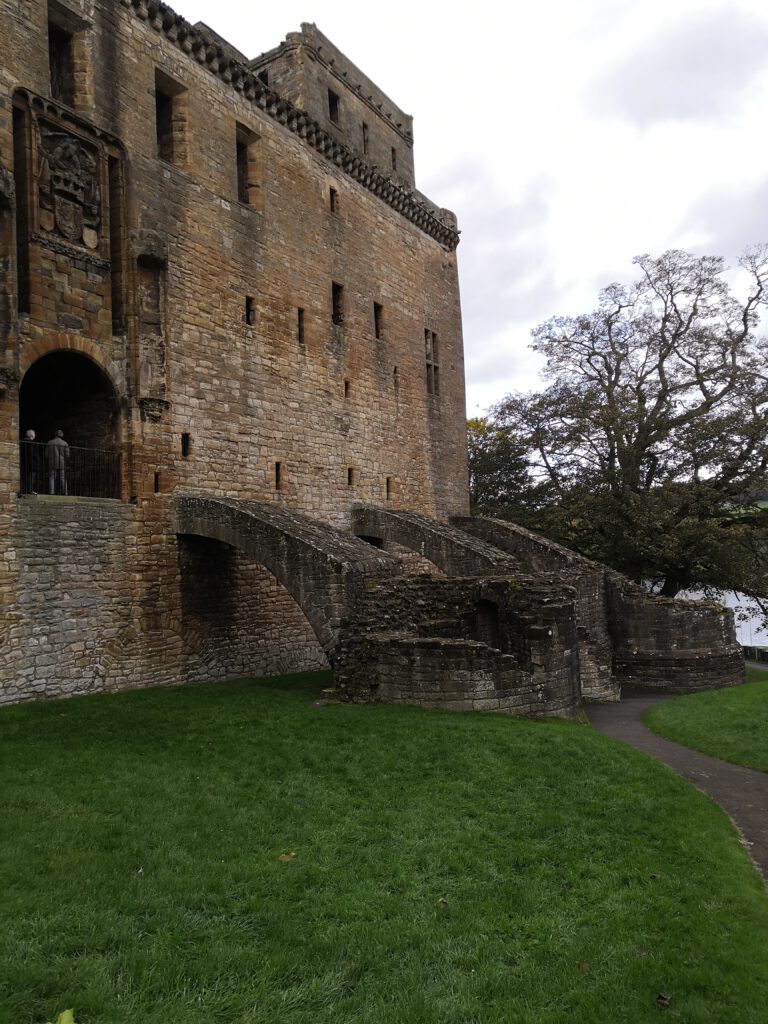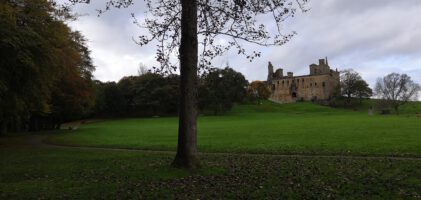Location: Linlithgow, West Lothians, Scotland
kind of castle: Palace
today: open to public
public transport: trains and busses to Linlithgow from Edinburgh and many other big cities
scheduled monument: yes
managed by: Historic Environment of Scotland
entrance fee: from £ 4.30 per person
opening times: daily from 09.30 to 17.30 (check following website just the opening times at the time (https://www.historicenvironment.scot/visit-a-place/places/linlithgow-palace/prices-and-opening-times/)
directions: Linlithgow Palace – Google Maps
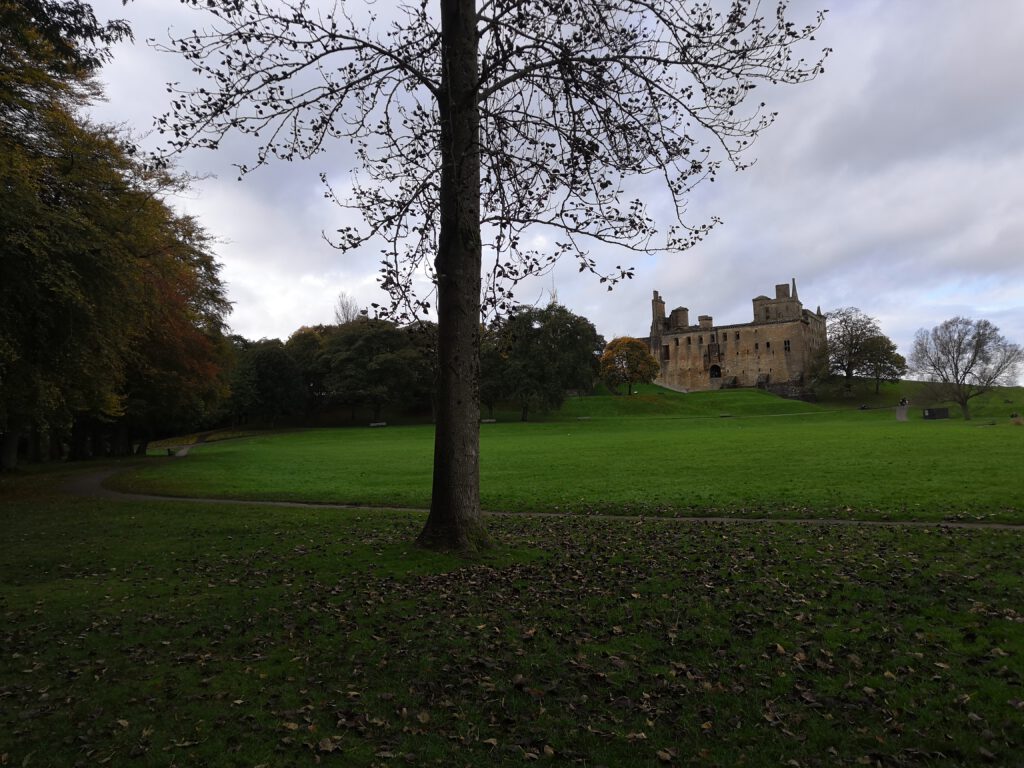
Situated in West Lothian on a small hill next to an inland loch, about 15 miles west of Edinburgh, Linlithgow Palace is now an impressive ruin, thanks to the Duke of Cumberland and his burning before the battle of Culloden (The Battle of Culloden – A scottish World). It once being one of the principal residences of the Scottish monarchs it’s a shame that these days you can only enjoy views of the burned-out castle with missing roofs and some missing floors. These days however, the Historic Environment of Scotland takes good care of the ruined palace.
With the first royal manor existing on the site in the 12th century it ever since has been in nearly constant use. In the 14th century it was replaced by the English with a fortification known as ‘the Peel’. The fort was retaken by an ordinary Scot in 1313. William Binning of Bunnock usually sold hay to the garrison of the peel, in September 1313 he stopped his wagon in the gate so that it couldn’t be closed. Following this blockade, eight of his companions jumped out of the wagon, they did hide below the hay before, and captured the peel for King Robert the Bruce, who sent reinforcements and dismantled the peel so that it would be worth nothing if retaken by the English.
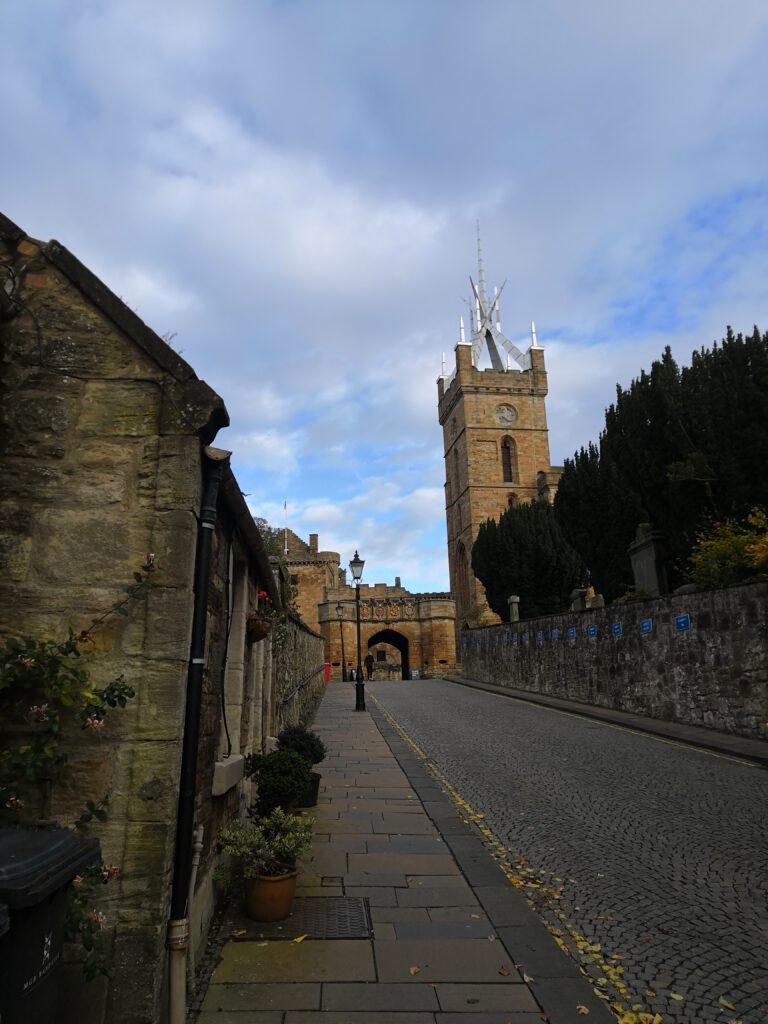
Over a hundred years later after the town of Linlithgow has been partially destroyed in a great fire, King James I started rebuilding the Palace as a residence of Scottish royalty, along with the palace he began rebuilding the Church of St Michael, which is located just a couple of meters to the south of the palace. Inspired by Sheen Palace, the widow of James II, Mary of Guelders, made further improvements in 1461, to prepare everything for the visit of exiled Henry VI of England. Due to significant additions by James III and James IV the palace developed into a formal courtyard structure over the following century.
King James IV spend quite a bit of time at the palace adding a lot of glory to the interiors with tapestries, silverware and much more. But he also added to the exteriors, for his interest in medicine and experiments he bought seeds for the palace gardener, and it was James IV who rebuild the park dykes and who kept his eyes on the building work at the quire of St Michael’s Church.
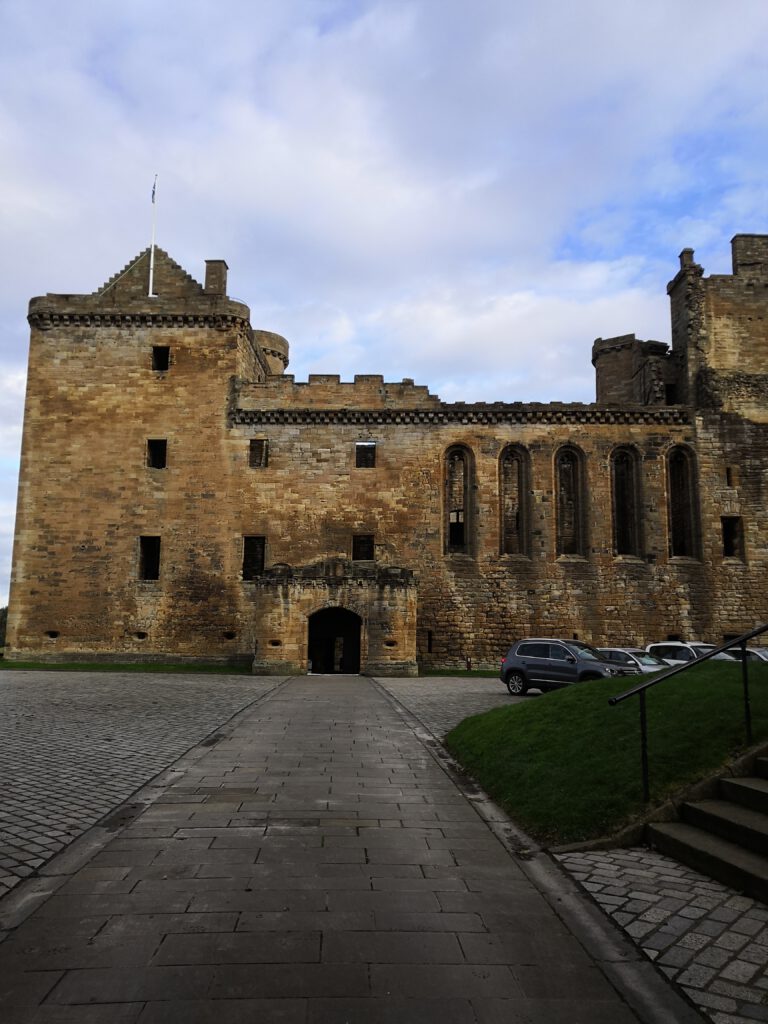
Linlithgow Palace also was the birthplace of the future King James V though after the death of his father, at the battle of Flodden, the infant king wasn’t kept at the Place but at Edinburgh Castle. He later started adding to the palace where his father stopped wit the courtyard fountain and the outer gateway.
In December 1542 Mary, Queen of Scots, was born at Linlithgow Palace, living there the early months of her childhood before being taken to Stirling Castle in July 1543, to secure the safety of the young queen. Afterwards the Queen didn’t return until being an adult. She never altered anything at the palace during her many visits, yet the palace is very strongly connected with the name Maria Stuart.

James VI, when coming to Linlithgow held a parliament in the great hall in 1583, the first since his grandfather before giving the palace to Anne of Denmark, his bride. Twelve years later the palace served as a prison for the Earl of Atholl, Lord Lovat and Kenneth Mackenzie to pacify Highland matters. It was not until the end of May 1595 that Queen Anne actually moved to Linlithgow, her and James VI’s daughter, Princess Elizabeth was born at the Palace and lived her early years there.
The Union of the Crowns in 1603 pretty much marked the end of the royal use of Linlithgow Palace. James VI & I and his wife moved down to London. The old North Range, having long been ruinous, collapse in 1607 with King James ordering the repairs between 1618 and 1622, but he never returned to see the finished works. In fact, no royal ever returned to live at the palace, non except King Charles I who spend a single night there in 1633.

During the last Jacobite Rising Bonnie Prince Charlie visited Linlithgow in 1745 while marching south, he but he never has spent a night there. In January 1746 the day came, when the Duke of Cumberland and his army destroyed most of the palace buildings by burning it out.
The Palaces days have been brighter in later times, in the early 19th century people started to actively conserve it and it is now maintained by the Historic Environment of Scotland. The palace ruins are now opened to the public.
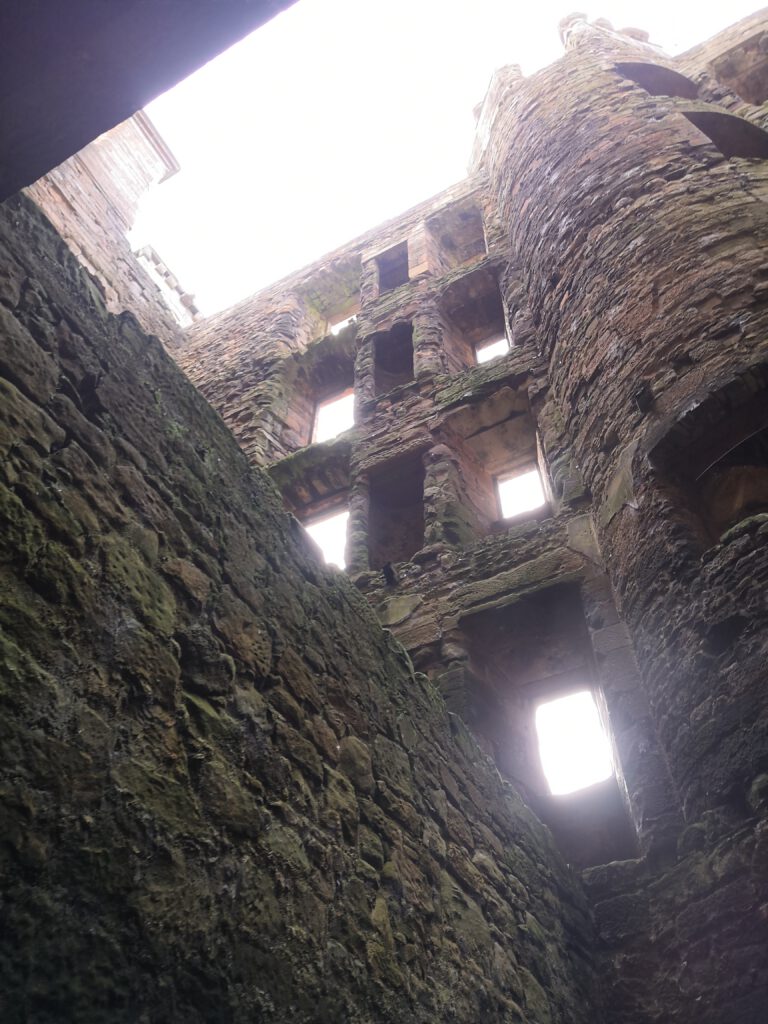
What would the Palace be without a ghost haunting it? Nothing. And most importantly that will never happen to any truly Scottish place anyway. So here we go, there are supposed to be two ghosts who haunt the palace one of which is Margaret Tudor who often can be seen standing at a window, waiting for her husbands return after the Battle of Flodden, which of course never happened and so she is standing there, to this day starring down on the path leading up to the palace.
The second spectre is the one of Mary of Guise, Marys mother who is said to be wandering through the castle on the ground floor her hands clasped together before here chest. She most likely haunts the palace cause of Marys early months, Mary of Guise had never wanted to stay at the palace after the death of her husband but cause of her daughter she was kinda forced to, at least for some months, the fear which consumed her in this time must have made her restless, fearing that Henry VIII might even make her his sixth wife and seems to have kept her trapped in this world to this day.
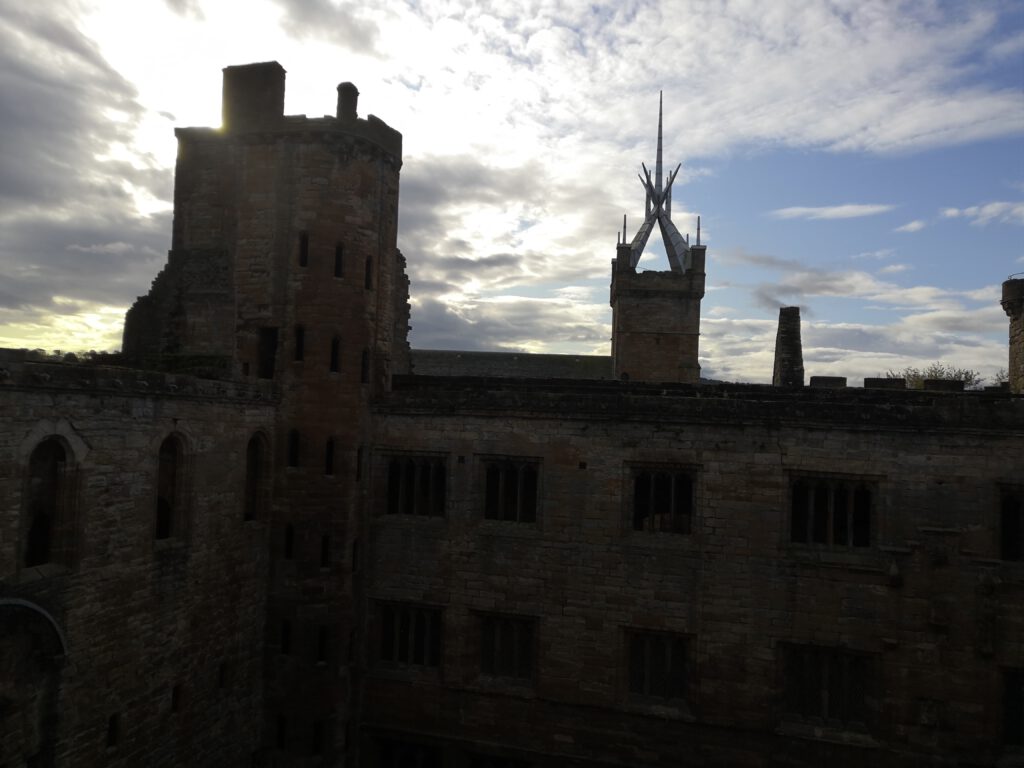
During the 21st century the palace staged as the entrance of Wentworth Prison in the hit series Outlander which helped the palace attract even more international tourists.
‘The loch in the damp hollow’, which is what Linlithgow means, to this day is a very lovely quadrangular palace ruin which offers views into the history of many nobles and marks the beginning of one of the most interesting stories of a monarch being the birthplace of Mary, the Queen of Scots.
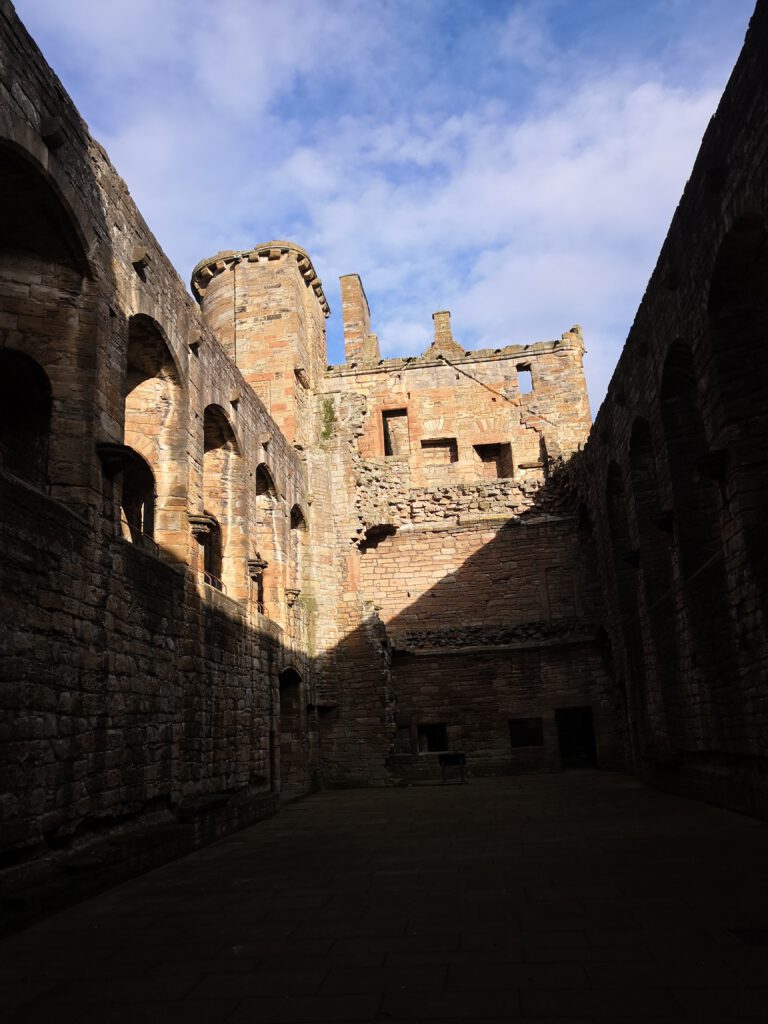
I for my part love to visit this beautiful place and hope that soon I will have the time to enjoy a walk around the grounds as well. Linlithgow Palace is definitely worth a visit since it is very close to Edinburgh, easy to reach and has a lot more to offer than people would first think (for example the spectacular views from the top of the tower (unfortunately have just pictures with myself in the picture so can’t show you) and of course the ghost haunting).
